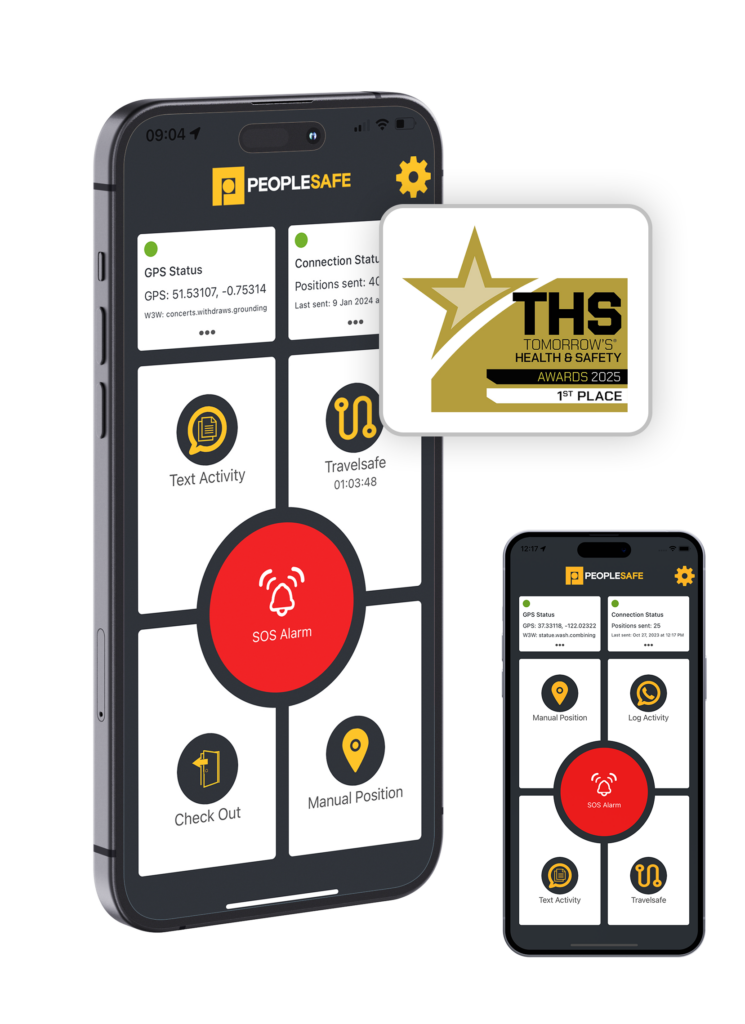The Impact of Workplace Morale on Productivity
Creating and maintaining high productivity levels is a common goal for organisations everywhere. To achieve this, many focus on strategies and tools designed to boost efficiency and output. However, one crucial factor that often gets overlooked is workplace morale.
Recent statistics reveal that 77% of employees are disengaged at work. This figure highlights a significant challenge for businesses striving to enhance their performance as disengaged employees are 18% less productive, costing their organisations an estimated fifth of their annual salary.
However the impact of low morale extends beyond individual performance; it affects team dynamics, innovation and overall company culture.
What is Workplace Morale?
Workplace morale can be defined as a measure of how employees feel about their jobs, their colleagues, and the overall atmosphere at work. It includes their enthusiasm, satisfaction, and confidence in their roles and the workplace environment.
High morale means employees are generally happy, motivated and engaged in their work. On the other hand, employees with low morale are likely to have feelings of dissatisfaction, lack of motivation and a disconnect from their work.
Several factors impact morale, such as feelings of safety, stress, leadership, communication, work-life balance, and wellbeing.
Why is Workplace Morale Important?
On an employee level, morale is important because it impacts job satisfaction and motivation, which directly influences productivity and retention. On a wider scale, organisations with a positive and engaged workforce consistently outperform those with low morale. This is due to several factors:
- Heightened employee engagement: When employees feel valued, appreciated and supported, they become more invested in their roles. This results in increased focus, a commitment to quality work and a willingness to take initiative. This translates to productivity, with Gallup reporting that teams with higher employee engagement are 22% more profitable.
- Enhanced collaboration: A positive work environment fosters a sense of teamwork and collaboration. In this environment, teams are more likely to share ideas, work together to overcome challenges and support their colleagues. This often leads to more productive, positive and innovative outcomes.
- Reduced turnover: Low morale is a significant driver of employee turnover, which is expensive for businesses. On the other hand, a positive work environment fosters an atmosphere of loyalty and retention, leading to a more stable and experienced workforce. Gallup found that organisations with high employee engagement report between 25-65% lower turnover rates than those with low engagement.
- Reduced absenteeism: High employee engagement and positive morale can also significantly lower absenteeism. Engaged employees are more likely to be present and committed to their roles, leading to a more consistent and reliable workforce. This prevents the 37% higher absenteeism found in teams with low morale.
- Fewer errors: A positive work environment encourages greater focus and diligence among employees. With higher morale, employees are less likely to make mistakes, resulting in reduced error rates and improved quality of work. Disengaged employees make 60% more errors in their work, while workplaces with highly engaged employees saw 70% fewer safety incidents compared to workplaces with low engagement.

The Impact of Morale on Productivity
On an individual level, employee morale has a significant impact on productivity. When morale is high, employees are more engaged, motivated and committed to their work, which leads to higher levels of efficiency and output. In fact, 76% of employees agree that workplace culture affects their productivity and 74% believe it influences their ability to serve customers effectively.
On the other hand, low morale can lead to disengagement, reduced effort and increased absenteeism, ultimately hindering productivity. This shows that prioritising strategies to boost and sustain employee morale is essential for achieving and maintaining high productivity levels in any organisation.
Factors That Impact Workplace Morale
Several key factors significantly influence workplace morale, each playing a crucial role in shaping the overall work environment and employee satisfaction.
Given that the median cost of employee turnover is 21% of an employee’s annual salary, investing in strategies to boost morale is not only a smart financial decision but also essential for long-term organisational success.
1. Feelings of Safety
Feelings of safety directly influence employee morale and productivity. When employees feel unsafe, whether due to physical hazards, concerns about workplace violence or a lack of training on safety protocols, it can lead to heightened stress and anxiety.
This can contribute to higher absenteeism, decreased job satisfaction, and ultimately, increased turnover rates. Our own research found that 22% of employees cited safety concerns as a contributing reason that they chose to leave their job in the past five years.
We also found that1 in 4 professional services employees reported that safety worries affected their work performance and wellbeing. This figure increases to 42% when an incident occurs in the company.
To address this, organisations should prioritise creating a safe and secure work environment. This includes regularly conducting risk assessments, implementing comprehensive safety protocols and providing ongoing training to employees.
Equipping employees with access to a personal safety alarm service that can offer real-time support and emergency assistance, such as Peoplesafe, can also significantly improve feelings of safety and security. This is especially true for the 60% of employees who feel unsafe while commuting on public transport during unsociable hours as services like Travelsafe can provide invaluable peace of mind.
2. Stress
Stress is a significant factor that can greatly impact employee morale, with 41% of employees globally reporting a lot of daily stress. High levels of stress can lead to burnout, decreased productivity and a negative workplace atmosphere. This stress could be caused by long, stressful commutes, feeling unsafe at work, or unmanageable workloads.
To combat stress, organisations should address key stressors such as implementing flexible working hours, allowing remote work options and providing access to mental health resources. Offering Employee Assistance Programs (EAPs) can provide employees with confidential counselling and support services, helping them manage personal and work-related stress more effectively.
For the employees concerned about their commute or safety at work, Peoplesafe can provide the reassurance of real-time monitoring and 24/7 emergency response.

3. Management and Leadership
Management and senior leadership within an organisation can significantly impact employee morale. Effective leaders who communicate clearly, show empathy and provide support to employees can motivate their teams.
They build positive relationships by being transparent and making decisions that positively impact the wellbeing of their employees. In contrast, poor leadership can lead to confusion, mistrust and frustration, causing low morale.
To improve leadership, organisations should provide training focused on leadership skills, communication strategies and emotional intelligence. Regular feedback sessions and coaching can also help managers develop stronger relationships with their teams, which can further improve morale and foster a positive work environment.
4. Regular Communication
Regular open communication is essential for maintaining high morale, as it helps employees feel connected to their colleagues and managers. This is especially true for employees working from home who are vulnerable to feeling disconnected and isolated. Regular updates, team meetings, and open-door policies can foster a sense of inclusion. Poor communication, on the other hand, can lead to a feeling of isolation.
To address this, organisations should establish regular check-ins, team meetings and utilise communication channels to bridge the gap for remote workers. Additionally, providing opportunities for employees to share their thoughts and feedback can further boost their sense of connection.
Beyond regular communication, offering additional layers of support is also vital for remote employees. For example, the Peoplesafe SOS app can be an invaluable tool, providing a direct link to emergency response. This ensures that even when employees are physically alone, they have access to immediate assistance, helping to reduce feelings of isolation and enhancing overall wellbeing.
5. Work-Life Balance
A healthy work-life balance has a significant impact on morale. When employees have the flexibility to manage their work and personal lives, they are generally happier and more productive. Companies that respect personal time and offer flexible working hours or remote work options show that they value their employees’ wellbeing, whereas a culture that involves excessive overtime or disregards personal time can lead to burnout, significantly lowering morale.
To support a healthy work-life balance, organisations could implement initiatives such as mental health days, employee assistance programmes and policies that encourage employees to disconnect from work after hours. Additionally, providing flexible work arrangements and encouraging regular breaks can help employees manage their personal and work responsibilities more effectively.
Promoting a culture that values balance and supports employee wellbeing can further prevent burnout and boost morale.
6. Wellbeing
Prioritising employee wellbeing is essential for boosting morale and making employees feel valued and appreciated.
In 2024 around 58% of workers worldwide reported struggling with their wellbeing, making systems such as employee wellness programs crucial. When employees see that their hard work is acknowledged and their wellbeing is a priority, they are more likely to stay motivated and maintain high morale. On the other hand, a lack of support can lead to feelings of being overlooked and undervalued.
To manage this, organisations could implement wellness programmes that include mental health resources, physical wellness programs and access to counselling services. Peoplesafe’s personal safety app can be a crucial part of these programs, offering employees support both at work and in their personal lives. Leading organisations, including Dignity, are already leveraging this solution as a valuable wellbeing perk, recognising its benefits in enhancing employee wellbeing.
Conclusion
It’s clear that creating a workplace with high morale is fundamental to achieving and sustaining productivity and organisational success. By proactively addressing factors that directly impact employee morale, companies can create a more engaged and motivated workforce. This approach not only drives immediate improvements but also ensures long-term success.







